Sharpening Damascus knives at home might initially appear challenging, but with the right tools and technique, it becomes a straightforward process. A Damascus steel knife isn't just a regular kitchen tool; it's an exquisite piece of craftsmanship with unique patterns embedded into its design.
These patterns arise from a technique known as pattern welding, wherein multiple layers of steel are forge-welded and then folded and hammered to give the knife its distinct look. The result? A strong, durable Damascus steel blade that's as functional as it is visually striking.
If you're a fan of these knives, you might also be interested in our roundup of the best Damascus kitchen knife sets, combining beauty with indispensable utility for your culinary needs.
First, let's take a look at a little history of Damascus steel and why it's so sought after.
The Legacy of Damascus Steel
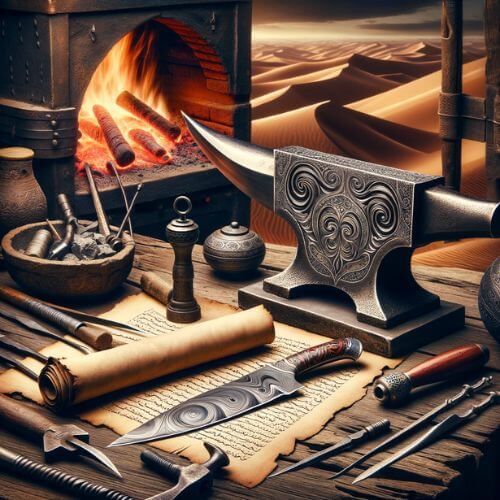
Damascus steel has a history as rich as its appearance. Originating from ancient wootz steel, this metal was first produced in India and Sri Lanka. The term "Damascus" comes from the Syrian city where weapons made of this steel were sold. These ancient Damascus steel blades were renowned not just for their beautiful patterns, but also for their exceptional sharpness and durability.
What Makes Damascus Steel Special?
One might wonder what's so unique about a Damascus steel knife as compared to a regular kitchen knife.
The answer lies in its manufacturing process. Damascus steel is crafted using pattern welding, where layers of steel are folded over each other multiple times.
This not only results in the characteristic patterns we admire but also in a blade edge that's incredibly sharp and resilient.
Moreover, the original wootz steel, from which Damascus steel has its roots, contained specific impurities. These, when forged appropriately, contributed to a mixture of high carbon steel (very hard, maintains sharpness) with bands of softer iron (provides flexibility). This unique combination made Damascus knives highly sought after.
Because they are very valuable, there are a lot of fakes out there. So check out our article on how to determine fake vs. Damascus steel knives!
Now back to the job of sharpening those beautiful knives at home:
Gathering the Supplies You'll Need
Before we get started, let's go over the supplies you'll need to sharpen Damascus steel knives: (We'll show you images of examples of the supplies.)
- Honing Rod: It's used regularly to maintain and realign the knife's edge. This process ensures that the edge remains straight and centered, extending the time between actual sharpening sessions. Honing doesn't remove much metal, if any, from the knife. Think of it like a tune-up for your knife.
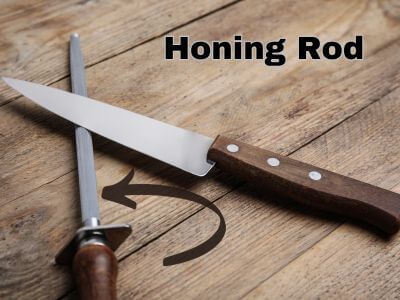
- Sharpening Stone: This tool grinds away metal to create a new, sharp edge. Over time, even with regular honing, the blade will eventually become dull due to microscopic chips, folds, or wear. When this happens, you'll need to sharpen the knife using a sharpening stone (or another sharpening device) to restore its cutting ability.
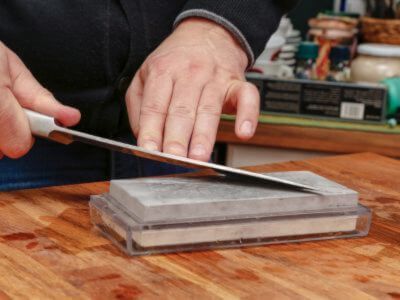
- Honing compounds: These abrasive powders polish the knife blade's edge. Available in various grits, the coarse ones help in removing nicks and shaping a new edge, whereas the fine ones are optimal for polishing and maintaining an edge that's already sharp.
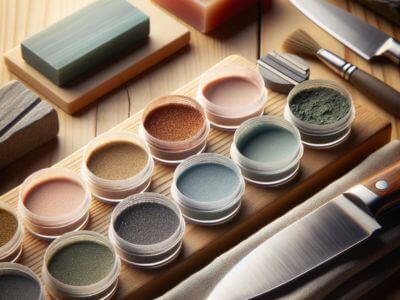
- A strop: Typically made from leather or canvas infused with honing compound, a strop further refines and polishes the edge post-sharpening.
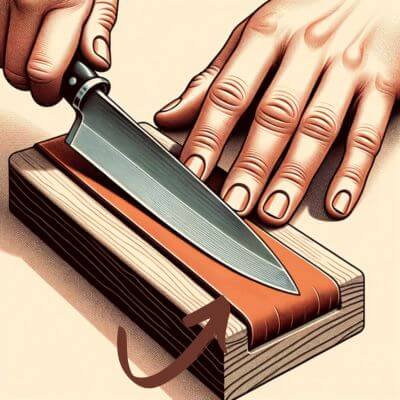
- Protective gear: Sharpening a Damascus knife can be messy. Wearing gloves and protective glasses is essential to prevent unwanted accidents. After all, no one wants metal filings anywhere near their eyes!
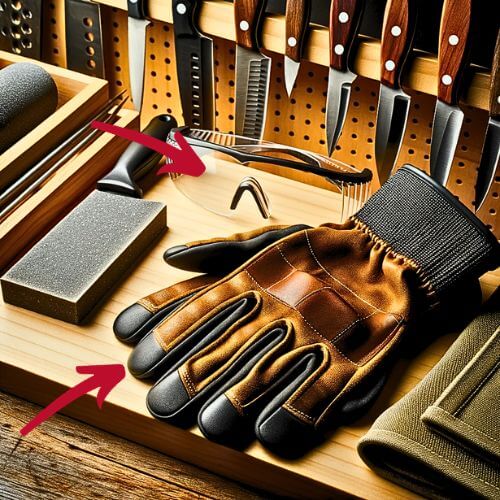
Sharpening Your Damascus Knives
1) To sharpen a Damascus steel blade, start with a coarse grit honing compound on your sharpening stone or rod. If you're using a stone, wet it first with water or lubricant to help reduce friction.
2) Hold your Damascus steel blade (or any knife you want to sharpen) at a 20-degree angle to the honing rod or stone. Sharpen the entire blade from heel to tip in even strokes. Remember to use even pressure; too much pressure can damage your Damascus blade.
3) Once you've finished with the coarse grit compound, move on to a medium grit compound and repeat step 2. The general rule of thumb is that you should sharpen for twice as long with the medium grit as you did with the coarse grit.
4) After you've used the medium grit compound, it's time for the fine grit compound. Again, sharpen for twice as long with the fine grit as you did with the medium grit.
5) Now it's time to strop your knife! Rub your strop against the fine grit compound until it's fully coated, then hold your knife at a 20-degree angle and stroke away from the edge of the blade (i.e., lead with the back of the blade). Continue until you've gone over the entire blade surface 3-4 times.
6) And that's it! Your Damascus steel knife is now nice and sharp—enjoy using it in all your culinary creations!
Here's a Video on Proper Use of a Whetstone!
How to Use a Whetstone!
To sharpen Damascus steel may initially feel overwhelming, but it truly is simple. All it takes is a sharpening rod or stone, honing compounds, and a strop. Follow the guidelines provided, and your knife will be ready for action in no time!
Note: It's also worth mentioning alternatives like electric sharpeners, which, although not traditionally used for a Damascus blade due to the intricate patterns, it can be a quick sharpening solution for other high carbon steel knives. However, always prioritize manual sharpening for the best results on Damascus blades.

More on Knife Maintenance
While sharpening is crucial, there are other aspects of knife care that ensure the longevity and performance of your knives:
- Cleaning: Always hand wash your Damascus steel knife. Dishwashers can be abrasive and might harm the delicate pattern on the blade. After washing, dry the knife immediately. Remember, Damascus knives rust if left damp for extended periods.
- Storage: It's best to store kitchen knives in a knife block or magnetic strip. Avoid cluttered kitchen drawers, as the blade can get chipped or damaged.
- Usage: Use wooden or soft plastic cutting boards. Hard surfaces, like glass or granite, can blunt the cutting edge of your knife. While Damascus steel blades are harder than their softer stainless steel "cousins", they do need a bit more care.

Advanced Sharpening Tips to Remember
To further enhance your sharpening process:
- Understanding Your Knife Blade: The bevel (the sharpened part) of most Western kitchen knives is sharpened to a 20-degree angle, but some Asian kitchen knives might be sharpened to a more acute 15-degree angle. Knowing your blade's requirements is half the battle.
- The Role of Honing Steel: Many confuse honing with sharpening. While both are essential, they serve different purposes. Honing steel realigns the knife blade edge without removing significant metal, perfect for quick touch-ups between sharpenings. When you hone a knife, you're essentially pushing the edge back to the center and straightening it.
- Electric Sharpeners: While manual methods are ideal for Damascus steel, electric sharpeners can be a swift solution for other knives. They come with preset angles, ensuring the blade is sharpened consistently.

Why Regular Sharpening?
A sharp knife is safer than a dull one. It might sound counterintuitive, but a razor sharp edge on a knife offers more control, reducing the chance of accidents. Regular maintenance ensures your kitchen knives remain in top condition, whether you're using Damascus steel blades or any other high carbon steel variants.
Don't forget to check out our article on fake vs. real Damascus knives for your kitchen (link is below)! You'll be glad you did! And while you're at it, read up on Kitchen Safety as well!

Thanks for stopping by our bee hive and learning how to sharpen a Damascus steel kitchen knife!

Bertie
Before you leave, if you haven't already done so, please subscribe so you will be the first to see reviews you can rely on.







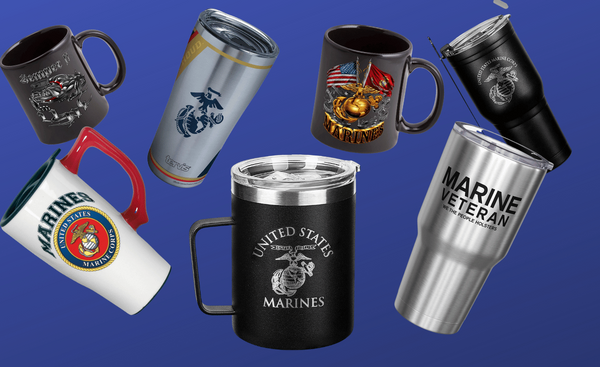
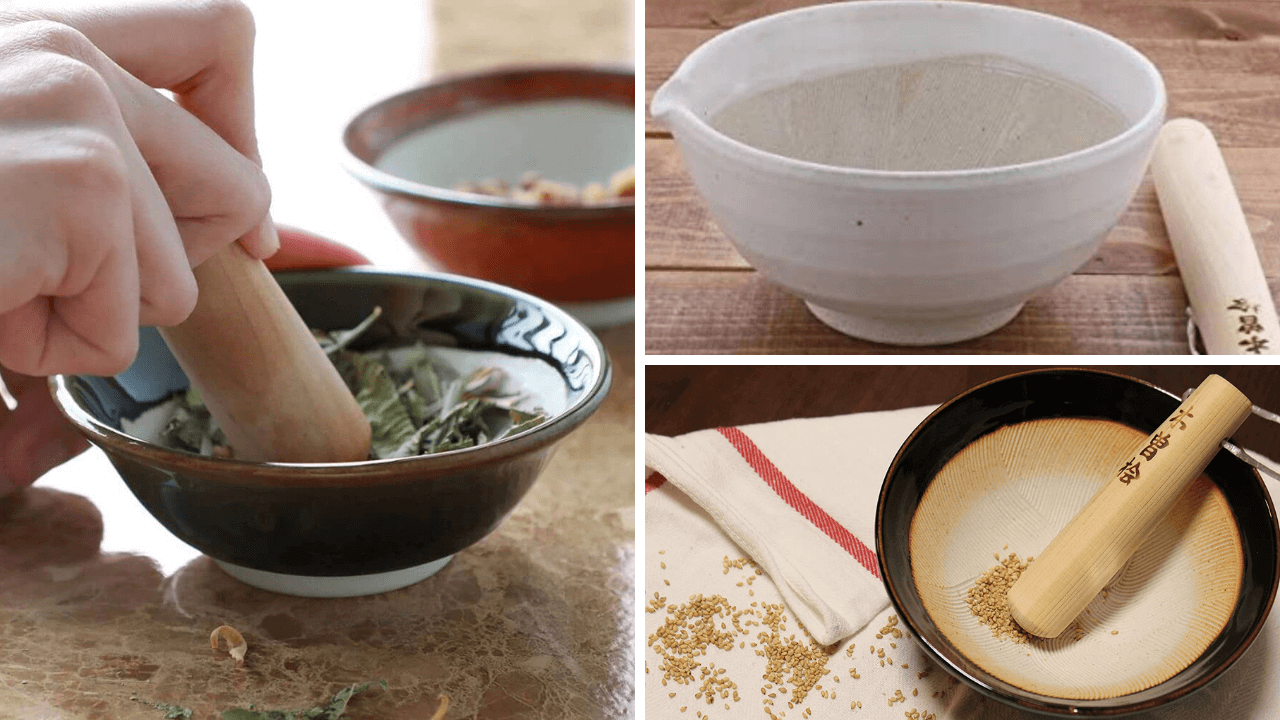

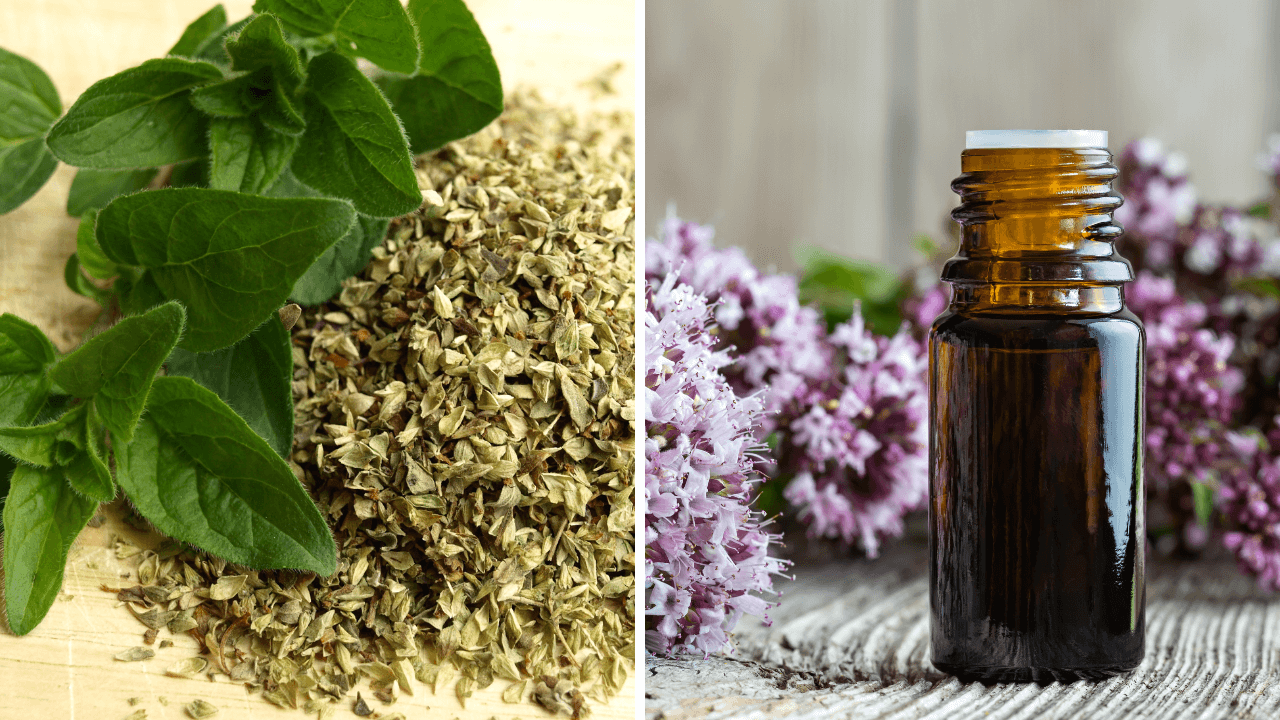
Member discussion